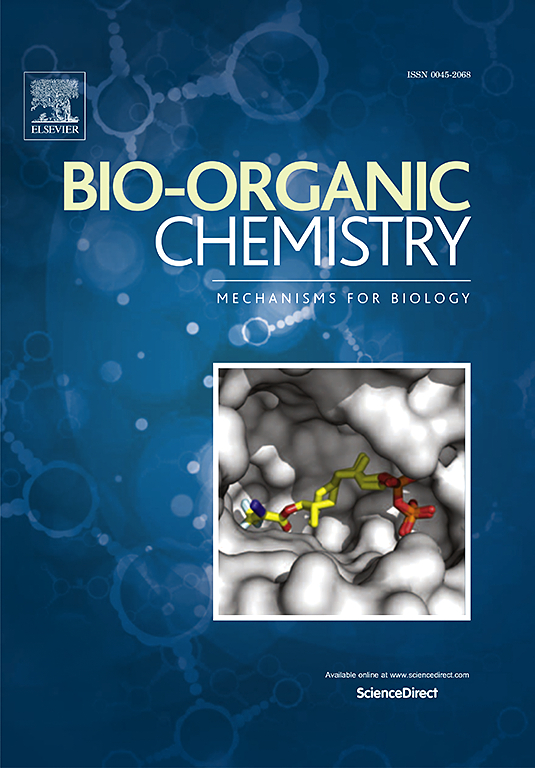Surface display and characterization of recombinant α-l-Rhamnosidase from Emiliania huxleyi on Pichia pastoris
IF 4.5
2区 医学
Q1 BIOCHEMISTRY & MOLECULAR BIOLOGY
引用次数: 0
Abstract
An α-l-Rhamnosidase gene with an open reading frame of 3192 bp encoding a 1036-amino acid protein (EhRha) was cloned from Emiliania huxleyi for flavonoid hydrolysis on the cell surface of Pichia pastoris (P. pastoris) strain GS115 by fusing with the anchor protein (AGα1) from Saccharomyces cerevisiae. Fluorescence microscopy and flow cytometry assays revealed that EhRha was successfully displayed on the cell surface of P. pastoris GS115. The enzyme activity assay and substrate specificity analysis showed that the enzyme activity of displayed EhRha was 78 U/g (cell wet weight). EhRha demonstrated a preference for the α-1,6 linkage l-rhamnose in hesperidin and rutin as its optimal substrates, while showing low activity towards the α-1,2 linkage l-rhamnose in naringin. Furthermore, EhRha demonstrated optimal activity at pH 7.0 and 30 °C, maintaining stability within a pH range of 4.5–9.0 at temperatures below 50 °C, and remained functional at temperatures ranging from 15 °C–30 °C. The enzyme activity was significantly enhanced by the presence of 10 mM Mn2+ and Fe3+, whereas 10 mM Ca2+ and 1 mM Fe3+ had an inhibitory effect. These findings suggested that displayed EhRha holds promise for enhancing the bioavailability of health-beneficial polyphenols in low-temperature processing applications.

赫克斯黎emiliia huxleyi重组α-l-鼠李糖苷酶在毕赤酵母上的表面展示及特性研究。
从赫克斯黎Emiliania huxleyi中克隆了一个α-l-Rhamnosidase基因,该基因编码1036个氨基酸的蛋白(EhRha),通过与酿酒酵母(Saccharomyces cerevisiae)的锚定蛋白(AGα1)融合,在毕赤酵母(Pichia pastoris)菌株GS115细胞表面水解黄酮类化合物。荧光显微镜和流式细胞术检测显示,EhRha成功地显示在P. pastoris GS115细胞表面。酶活性测定和底物特异性分析表明,显示的EhRha酶活性为78 U/g(细胞湿重)。EhRha对橙皮苷和芦丁中α-1,6链的l-鼠李糖具有较好的活性,而对柚皮苷中α-1,2链的l-鼠李糖活性较低。此外,EhRha在pH 7.0和30°C时表现出最佳活性,在低于50°C的温度下在pH 4.5-9.0范围内保持稳定,在15°C-30°C的温度范围内保持功能。10 mM的Mn2+和Fe3+显著增强了酶活性,而10 mM的Ca2+和1 mM的Fe3+对酶活性有抑制作用。这些发现表明,所显示的EhRha有望在低温加工应用中提高对健康有益的多酚的生物利用度。
本文章由计算机程序翻译,如有差异,请以英文原文为准。
求助全文
约1分钟内获得全文
求助全文
来源期刊

Bioorganic Chemistry
生物-生化与分子生物学
CiteScore
9.70
自引率
3.90%
发文量
679
审稿时长
31 days
期刊介绍:
Bioorganic Chemistry publishes research that addresses biological questions at the molecular level, using organic chemistry and principles of physical organic chemistry. The scope of the journal covers a range of topics at the organic chemistry-biology interface, including: enzyme catalysis, biotransformation and enzyme inhibition; nucleic acids chemistry; medicinal chemistry; natural product chemistry, natural product synthesis and natural product biosynthesis; antimicrobial agents; lipid and peptide chemistry; biophysical chemistry; biological probes; bio-orthogonal chemistry and biomimetic chemistry.
For manuscripts dealing with synthetic bioactive compounds, the Journal requires that the molecular target of the compounds described must be known, and must be demonstrated experimentally in the manuscript. For studies involving natural products, if the molecular target is unknown, some data beyond simple cell-based toxicity studies to provide insight into the mechanism of action is required. Studies supported by molecular docking are welcome, but must be supported by experimental data. The Journal does not consider manuscripts that are purely theoretical or computational in nature.
The Journal publishes regular articles, short communications and reviews. Reviews are normally invited by Editors or Editorial Board members. Authors of unsolicited reviews should first contact an Editor or Editorial Board member to determine whether the proposed article is within the scope of the Journal.
 求助内容:
求助内容: 应助结果提醒方式:
应助结果提醒方式:


